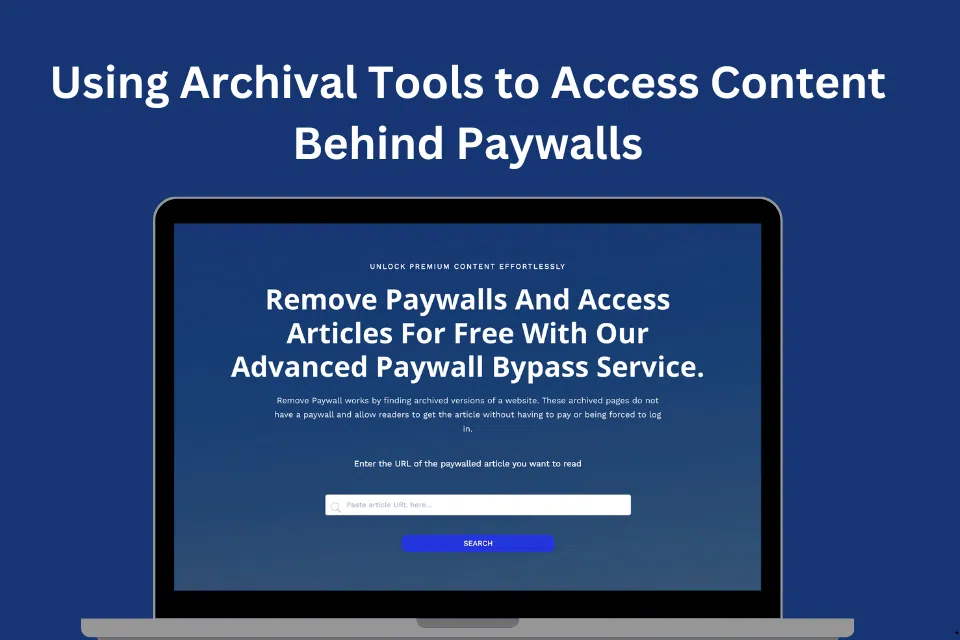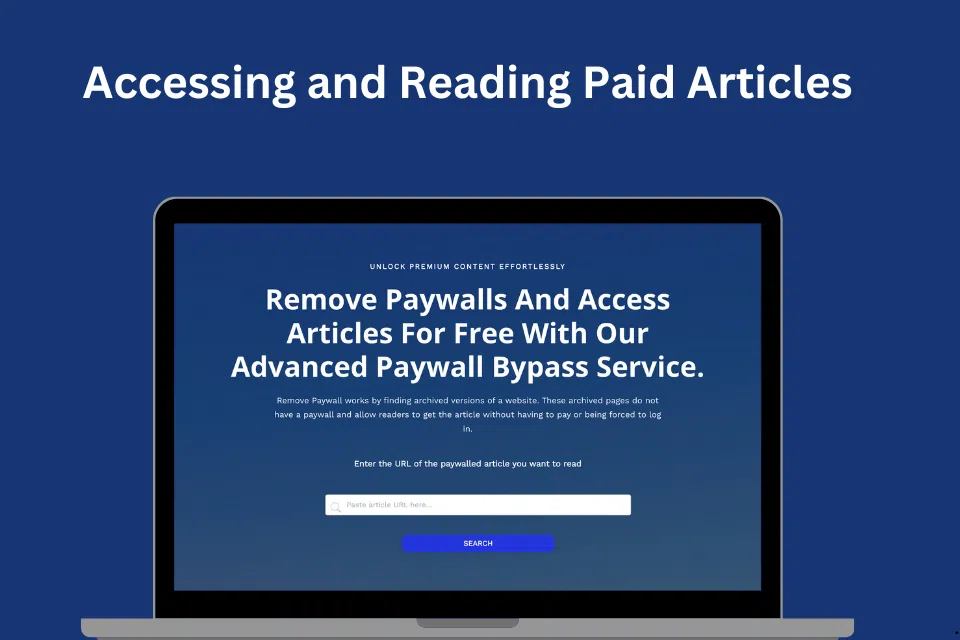Top Tools and Strategies for Accessing Premium Content Legally
Navigating the digital landscape often means encountering paywalls restricting access to valuable content. While publishers use these barriers to generate revenue, various tools and methods exist to bypass paywalls and access the information you need. We will explore some effective tools for bypassing paywalls, focusing on using Inspect Element and other techniques.
How to Use Inspect Element to Access Content
Understanding Inspect Element
Inspect Element is a built-in feature in most modern web browsers, such as Google Chrome, Firefox, and Microsoft Edge. This tool allows users to view and manipulate a webpage’s HTML and CSS. Users can make temporary changes to the content displayed on their screen by accessing the underlying code. This can be particularly useful for bypassing paywalls, as many paywall scripts are embedded within the HTML or CSS of a webpage. Users can often remove or disable the paywall restrictions by identifying and modifying these elements.
To use Inspect Element, right-click on the webpage and select “Inspect” or “Inspect Element” from the context menu. This opens the Developer Tools pane, displaying the webpage’s HTML and CSS. From here, users can navigate through the code to find and alter the elements related to the paywall. It requires a basic understanding of HTML and CSS, but even beginners can learn to identify and modify the necessary components with some practice.
Practical Steps to access Content Using Inspect Element
Using Inspect Element to bypass paywalls involves a few practical steps. First, identify the element that is responsible for blocking the content. This is often a div or script tag that overlays the content or redirects the user to a subscription page. Once located, you can delete or hide this element to access the underlying content. To do this, right-click on the highlighted element in the Developer Tools pane and select “Delete Element” or modify the CSS properties to make it invisible.
Another method is to disable JavaScript on the webpage. Many paywalls rely on JavaScript to function; disabling it can sometimes remove the paywall. To do this, go to the settings in the Developer Tools pane and uncheck the “Enable JavaScript” option. After disabling JavaScript, refresh the page to see if the paywall has been removed.
These methods are not foolproof and may only work on some websites, but they provide a starting point for users looking to access content behind paywalls. It’s important to use these tools responsibly and understand that circumventing paywalls may violate the terms of service of some websites.
How to access Content with Inspect Element
Exploring Advanced Techniques
For those more familiar with web development tools, there are advanced techniques to bypass paywalls using Inspect Element. One such technique involves modifying the cookies and local storage values. Some paywalls track user activity through cookies, limiting the number of articles users can view. Users can reset their article view count and gain access to more content by deleting or altering these cookies. This can be done by navigating to the “Application” tab in the Developer Tools pane, where users can view and modify the cookies the website stores.
Additionally, some websites use obfuscated code to hide their paywall scripts. In these cases, users can look for script tags in the HTML and disable them by editing the code. This requires a deeper understanding of JavaScript and HTML, but it can effectively remove complex paywalls. Users can also use browser extensions like “Bypass Paywalls” that automate this process by identifying and disabling paywall scripts for them.
Legal and Ethical Considerations
While using Inspect Element to bypass paywalls can be effective, it’s important to consider the legal and ethical implications. Many websites rely on subscription revenue to support their operations, and bypassing paywalls may violate their terms of service. Users should weigh the benefits of accessing the content against the potential consequences of violating these terms. Finding free alternatives or using institutional access may be a more ethical and sustainable solution.
It’s also worth noting that some publishers offer limited-time free trials or discounted subscriptions, which can provide legal access to the content without bypassing paywalls. Supporting content creators by subscribing or using legitimate access methods helps ensure high-quality information availability.
Conclusion
Bypassing paywalls using tools like Inspect Element can effectively access restricted content, but it requires a certain level of technical knowledge and ethical consideration. Understanding how paywalls work and using methods like modifying HTML and CSS, disabling JavaScript, and altering cookies can help users access the necessary information. However, using these tools responsibly and considering the legal and ethical implications of bypassing paywalls is important. Supporting content creators through legitimate means whenever possible ensures the sustainability of valuable online content.
You can find more detailed information on our methods and ethical considerations on our detailed guide page.





